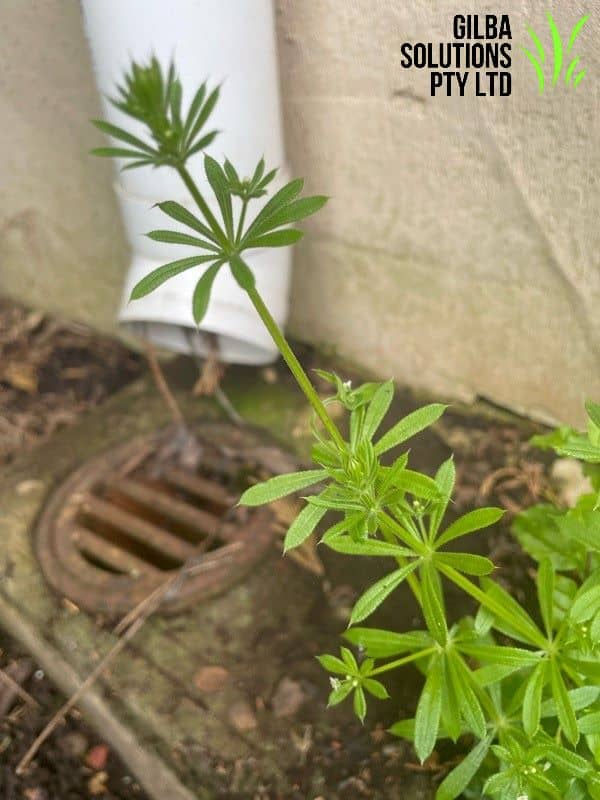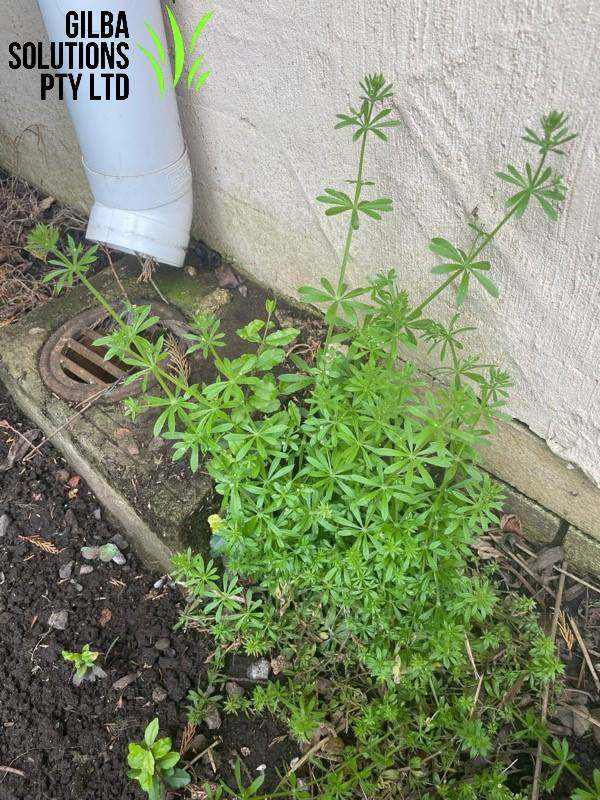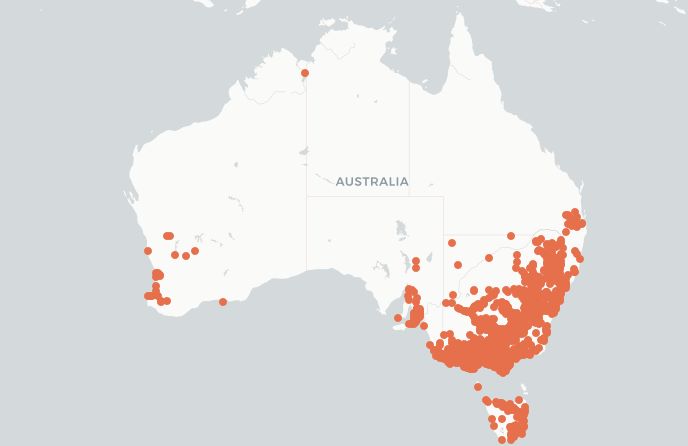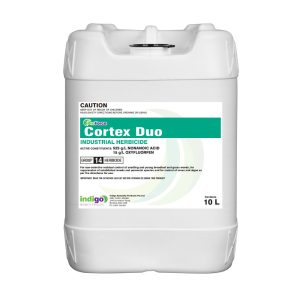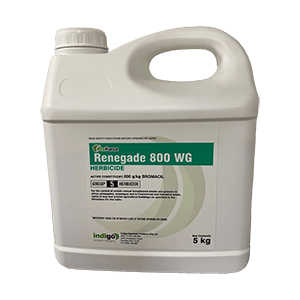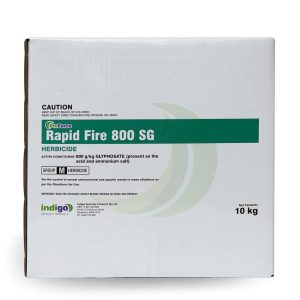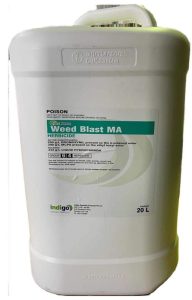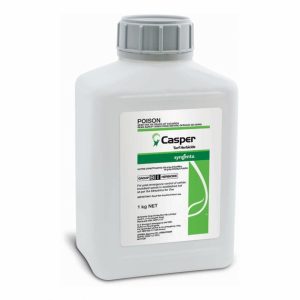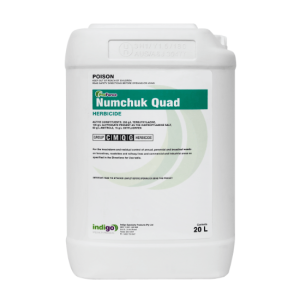Cleaver (Galium aparine).
Cleaver (Galium aparine) aka Sticky Willy or Velcro Plant is a short-lived herbaceous plant. It has a trailing, scrambling or weak climbing habit. In Canberra it is called Sticky Weed.
You often find this species in temperate areas, but it also inhabits sub-tropical and semi-arid regions.
After you read this, you will be able to:
- Identify Cleavers aka Bedstraw, Sticky Willy or Velcro Plant.
- Know the habitat of Cleavers (Galium aparine) or Velcro Plant .
- Know the best cultural and chemical methods to control Cleavers.
Why is Cleaver a Problem Weed?
- Galium aparine is an annual, fast-growing, competitive weed. It grows quickly and smothers other plants.
- It has hooked hairs and bristles on its stems, leaves, and fruits. These allow it to spread easily via fur, clothing, and machinery.
- Cleavers reduce crop yields.
- Sticky Willy contaminates wool and fur.
- Cleaver compete with plants for water, nutrients, and light.
- it is difficult to remove as its weak stems can break off easily when you pull it up. This leaves the root behind to regrow.
- Galium aparine is an environmental weed in Victoria, Tasmania, and New South Wales.
Galium aparine is a popular herbal remedy that is often used to reduce swelling, boost energy, and treat infections.
The distribution map for Cleaver is courtesy of The Atlas of Living Australia.
How to Identify Cleaver.
Cleaver is a scrambling or twining annual up to 1.5 m long. Once it germinates, young plants continue to grow over mild Winters. Mature plants will die before any frost occurs.
- The seeds germinates in the Autumn, and it flowers as early as April.
- Peak flowering and fruiting occurs between October and January.
- The seed may survive in the ground for up to three years.
Bedstraw has a slender taproot and sprawling stems. It tolerates freezing temperatures while it is in the vegetative growth stage.
Category: It is a Broadleaf (Dicot) weed.
Photosynthetic Pathway: Cleaver is a C3 Weed.
Flower: The flowers are white, about 1 mm long and 1 to 2 mm across. They are in small clusters in the forks of the leaves.
Height: The stems are 0.9 m or longer, and have an angular or square shape.
Leaf length: The leaves of the Velco Plant taper at their base, and are 10 to 60 mm long.
Leaf Width: The leaves are 2 to 8 mm wide, and have a point up to 1 mm long.
Reproduction of Cleaver:
Cleaver reproduces by seeds, that are spread by water, wind and machinery, and in garden waste.
Because of the hooked hairs on their fruit, the seeds easily become attached to clothes and animals.
The seeds need chilling before they will germinate.
Once it germinates it flowers in as little as 8 weeks.
- Seed longevity: 1 to 5 years.
- Germination depth: 7 cm.
- Seeds/flower: 2.
- Seeds/plant: 300 to 400.
In loose soil seedlings can emerge even if they are buried up to 75 mm deep. Exposure to light inhibits germination. and seeds do not germinate if they are on the soil surface.
Comments: Although germination and growth are best in cool, moist soil, Bedstraw can tolerate dry soil once it establishes.
The easy ways to identify Cleaver or Velco Plant:
- The stems are hollow.
- Plants have a square cross-section with ridges at the corners.
- The entire plant feels sticky.
- Cleaver has a shallow root system, with a branched taproot.
Habitat: It is a weed of crops, orchards, gardens, pastures, grasslands, open woodlands, forests and margins, waterways and wetlands. You often find Cleaver along fencelines or on waste land.
Cleavers are a good indicator weed of loamy soils, and are found in soil pH’s ranging from 5.5 to 8.0.
For more information on weeds check out our weed ID Chart.
How to Control Cleaver.
You can control Velcro Weed by cultural and chemical means, but successful management of this weed is best if you adopt an integrated approach.
Management Calendar for Cleavers.
Management Calendar for Cleavers | ||||||||||||
Annual | ||||||||||||
Month | Jan | Feb | Mar | Apr | May | Jun | Jul | Aug | Sep | Oct | Nov | Dec |
Germination | ||||||||||||
Active Growth | ||||||||||||
Flowering | ||||||||||||
Seeding | ||||||||||||
Pre emergent Herbicide | ||||||||||||
Post emergent Herbicide | ||||||||||||
Cultural Control of Cleaver.
If you only rely on cultural means to control Sticky Willy it does not work. However, for small infestations you can hand remove plants before they flower and produce seeds. It is best to hand remove this weed in the early Spring when the soil is damp. They have a shallow root network at this stage and pull out easily.
Chemical Control of Cleaver.
The cuticle of Cleaver or Velcro Plant has an amorphous wax coat. This makes the penetration of most herbicides more difficult. However, there are several options that do work and are readily available.
The following products are not necessarily registered in Australia for this weed so overseas work is referenced where appropriate.
Post Emergent
- Cleaver is tolerant of 2,4-D and MCPA which means they don’t work very well.
- It is very susceptible to Bromoxynil, and a mix of Bromoxynil and MCPA.
- Options worth looking at include Stature Herbicide and ProForce Weed blast MA.
- Small plants you can control with Quinclorac or Carfentrazone
- In the UK, diflufenican (the active in Warhead herbicide) gives around 90% control in cereals.
- Prosulfocarb the active in Casper Turf Herbicide is very effective but you cannot use this on Buffalo turf.
- You can use Ethofumesate (500g/L) at 3 to 6 L /Ha for control in Beet crops and ryegrass pastures in Australia.
Post Emergent Herbicides for Cleaver.
Product | Active | Group | Rate/Ha | Comments | ||||
Casper | Prosulfuron + Dicamba | 2 and 4 | 800g to 1 Kg | Use from the Autumn to the Spring. Use high rates in cool months or if there is high weed pressure. Control takes 4 to 6 weeks. Use an NIS at a rate of 0.25 to 0.5% v/v. | ||||
Quinstar | Quinclorac | 4 | 4.1 L | Apply to actively growing weeds. | ||||
Weed Blast MA | Bromoxynil + MCPA | 6 + 4 | 3-6 L | Use evenly over the area you want to treat. DO NOT mow turf for 2 days after use. Apply a minimum of 500 L of water per Ha. | ||||
Stature | MCPA + Bromoxynil + Diflufenican | 4 + 6 + 12 | 2 L | Use on actively growing weeds. Complete control may take 4 to 6 weeks. You may need to reapply in 4 – 6 weeks. Use a NIS for difficult to wet weeds. Use in 200 to 500 L of water. Transient discolouration may occur up to 21 days after use. | ||||
Warhead | MCPA + Clopyralid + Diflufenican | 4 + 12 | 5 L | You may see discolouration on kikuyu, carpet grass and Queensland blue. Do not overlap. Use an NIS. | ||||
Non Selective Control of Cleaver.
- Glufosinate-ammonium provides control for 4 to 6 weeks. However Cleavers will regrow due to the limited movement of glufosinate.
- Glyphosate. You can use Glyphosate to control Velcro Plant but if water quality is an issue then use ProForce Manta Ray.
The following are non-selective. They also have a long term residual and stop re-growth of Sticky Willy.
- Renegade. Renegade stops seed germination for up to 12 months. This reduces the need for multiple herbicide applications.
- Numchuk Quad. This gives effective post and pre emergent Sticky Willy control for up to 12 months.
- Cortex Duo. Cortex Duo gives a rapid knockdown of Cleaver and residual control for up to 3 months. It is also safe to use around trees.
Table of Non Selective Herbicides to Manage Velcro Plant.
Product | Active Ingredient | Group | Use Rate/Ha |
Glufosinate 200 | Glufosinate-ammonium | 10 | 1 to 6 L |
Rapid Fire 800 | Glyphosate | 9 | 0.9 to 1.35 Kg |
Numchuk Quad | Terbuthylazine + Glyphosate + Amitrole Oxyfluorfen | 5 + 9 + 34 + 14 | 20 to 25 L |
Cortex Duo | Nonanoic Acid + Oxyfluorfen | 14 | 7 L/1000L |
Renegade | Bromacil | 5 | 3.5 to 6.5 Kg |

